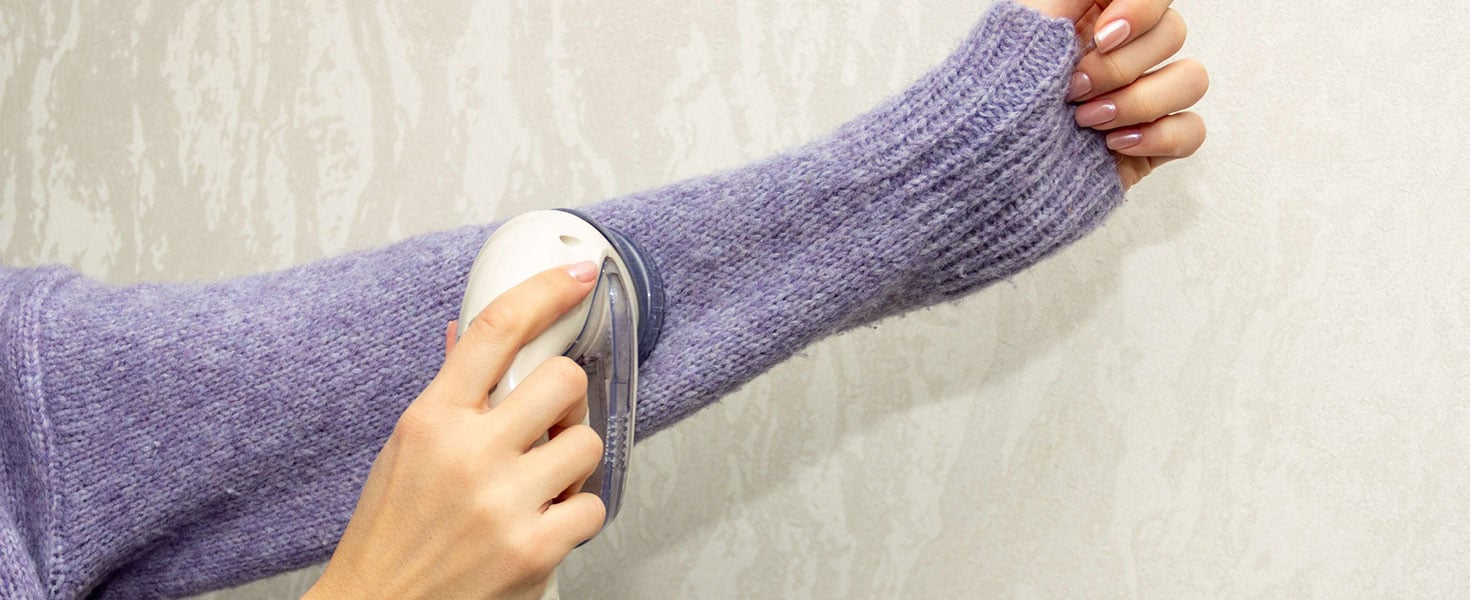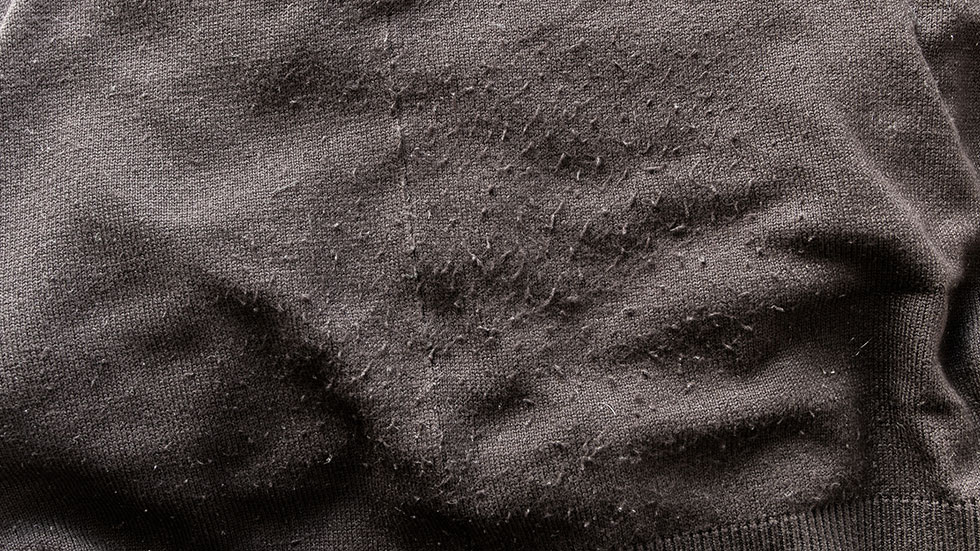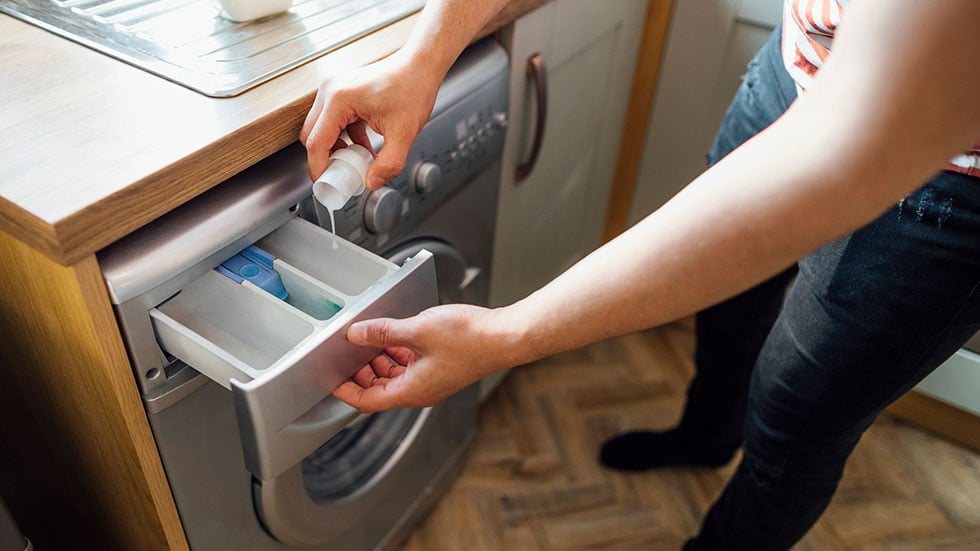

Have you ever been pulling clothes out of the washer or dryer, or been getting dressed in the morning, and noticed little balls of fuzz on your clothes? These are often called “pills” or little, firm balls of lint that form on the surface of certain fabrics of clothing.
While a result of typical wear and tear, pills on your clothing or fabrics can be annoying, and even unsightly. Learn about what causes pilling, how to remove it, and how to prevent it altogether.

What is pilling?
Pilling typically happens due to rubbing or abrasion of clothes during normal wear and use, and appears on fabric when groups of short or broken fibers become tangled together and form a tiny knot. It may happen all over the piece of clothing, or just in places like the armpits, around the collar, or between the thighs and rear of pants, where the fabric rubs together.
Some fabrics, such as knits, pill worse than woven, silk, or linen fabrics since the threads are looser. Then, once a fabric starts pilling, it attracts more loose threads, even from other articles of clothing, causing more pills.

How to remove pilling from your clothes
If you notice your clothes are starting to pill, there are a few things you can do to remove them:
- Purchase a fabric comb or battery-operated pill remover, which allows you to carefully shave the pills from the surface of the fabric.
- Using small, sharp scissors or a safety razor, pull the fabric tight over a curved surface and carefully remove the pills. Be very careful not to cut the fabric.
- Try switching to a laundry detergent with cellulase, which is an enzyme that breaks down fibers and removes stains. It may help reduce or even prevent pilling.

How to prevent pilling on your clothes
To prevent pills altogether, here are a few tips:
- If you have woven or wool fabrics that are more apt to pilling, wash them separately using the gentle cycle or hand wash them. Use cold water.
- Turn garments inside out, which can help prevent abrasion to the fabric from other clothes, zippers or buttons.
- Fasten zippers, buttons and hooks to keep them from rubbing against other clothes.
- Wash delicate items in their own washer load. Avoid mixing them with items like jeans or towels, which are rough and can cause harm to the fabrics.
- Avoid overloading your washing machine, especially if it has an agitator. This makes it difficult for clothes to move easily, and the friction can cause damage.
- Use fabric softener, which can soften the fabric and coat the fibers to lessen abrasion.
- Don’t put these clothes in the dryer, but instead line dry or dry them on a flat surface.
- Reduce friction on your clothes as much as possible. For example, avoid wearing a backpack or purse with a top that will pill easily, or don’t wear as many layers that will rub together.
In general, avoid buying clothing that are fiber blends, such as knits or woven fabrics. Check the label to learn what they are made with, and choose natural and synthetic fibers. If you do buy woven or knit, opt for one that is more tightly knot rather than loosely knit.
